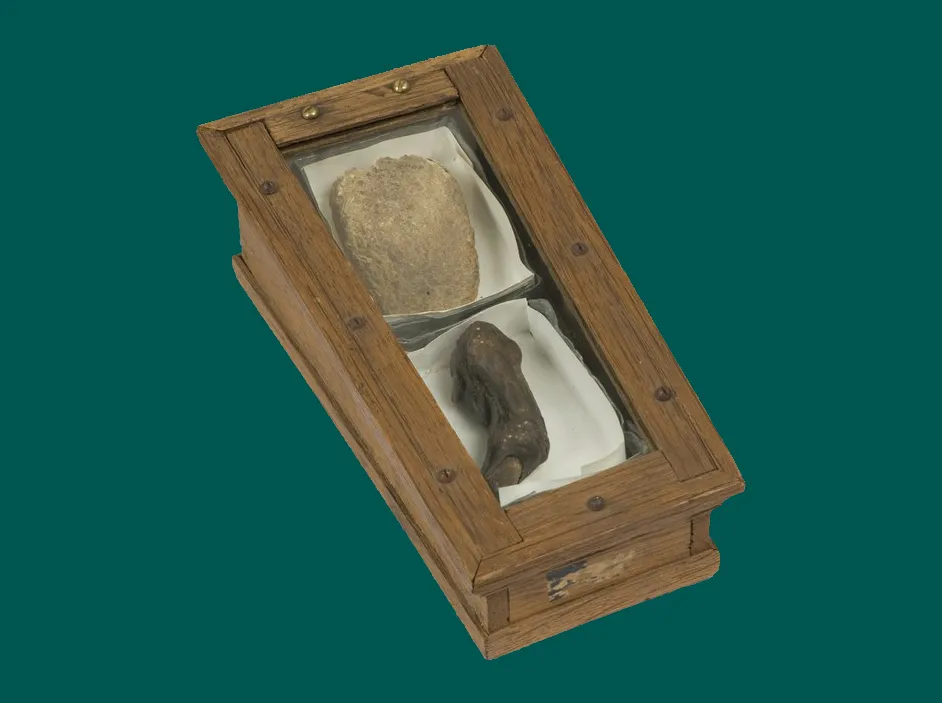The tongue and finger of the De Witt brothers

A tongue and a finger as bizarre reminders of a gruesome murder: Cornelis de Witt
The most bizarre objects in the history of the Prison Gate are to be found in a small oak-wood box. This miniature coffin contains the tongue of Johan de Witt and the dried finger of his brother, Cornelis, each preserved in salt. The longer one looks at them, the more lifelike the tongue and finger appear.
Sold for a few pennies
A frenzied crowd threw themselves upon the bodies of the De Witt brothers during their massacre in 1672. Their limbs and pieces of clothing were sold to bystanders at auction. A finger raised fifteen to twenty pennies, an ear twenty-five to thirty, and a toe raised ten pennies. Pieces of the De Witt brothers were later displayed in pubs. Some of the pieces were dried, and their hearts were preserved in turpentine.
A precious silver box containing notes and poems
A few body parts – a tongue and a finger – were obtained by supporters of the De Witt brothers. The supporters cherished them as relics, and even had a precious silver box made for them, with a depiction of the brothers’ murder engraved on the lid. Aside from the body parts, the box also contained documents describing the contents. These include a poem that begins with the line: ‘This box contains / the wondrous part / of Jan de Witt [Dees doos bezit / het wonder lit / van Jan de Witt].’

The gruesome souvenirs are banned from public display
Two centuries later, in 1888, the tongue and the finger came into the possession of the Gemeentemuseum Den Haag. The then director, A.J. Servaas van Rooyen, had a little box made for them so that they could be displayed more effectively. Many museum visitors were upset by the sight of the grizzly souvenirs, however, and in October 1894 the city council of The Hague thus decided to ban the exhibition of the tongue and finger. For the last thirty years, they have again been on display in the Historical Museum of The Hague, of which the Prison Gate forms a part.
Is it a toe? No, it’s a finger!
For centuries, it was thought that the box contained a tongue and a toe, something to which one of the notes in the silver box also attests:
‘We behold that this wizened toe / Was cut off the governor (Aanschouwen wij dees dorre teen / Is van den Ruwaerd afgesneen)’
Research carried out by the Netherlands Forensic Institute in 2011, however, revealed that the toe is in fact an index finger. The only evidence that it belonged to Cornelis de Wit is provided by the note itself.
On the film set of ‘Michiel de Ruyter’
The tongue and the finger have always captured the imagination. In 2015, when making the historical adventure film Michiel de Ruyter, the director Roel Reiné filmed the political assassination of the De Witt brothers in detail. This included a scene in which the actor Victor Löw, as an Orangist, showed the tongue and finger belonging to the brothers, who were murdered in 1672, to his colleagues in the States General. The box containing the relics was closely guarded on the film set. Nevertheless, the director later decided to delete the scene featuring the showpieces, on the grounds that it did not follow on from the previous scene, in which the naval hero Michiel de Ruyter quarrelled with Prince William III about the brothers’ gruesome murder. The deleted scenes with the showpieces can still be seen in the Blu-ray version of the film.

